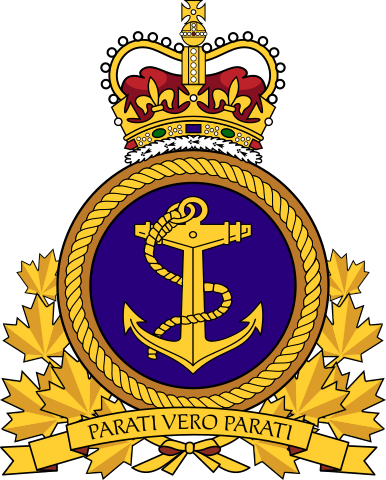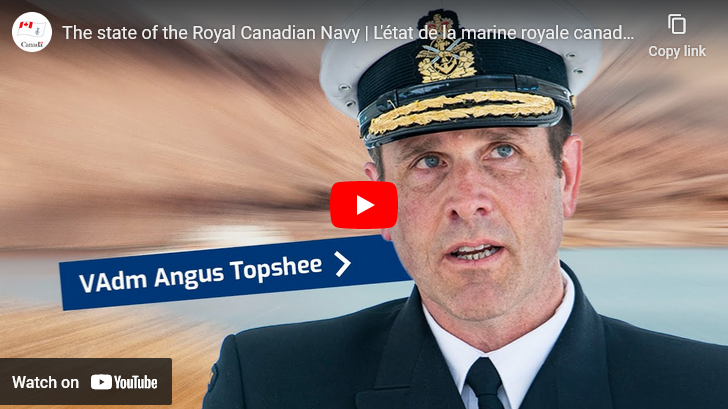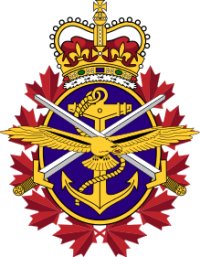Drachinifel
Published 15 Sept 2023Today we look take a quick tour through Canada’s naval history as exemplified by the RCN Naval Museum in Halifax, Canada.
(more…)
January 4, 2024
The Halifax Naval Museum – A Hidden Treasure
December 7, 2023
Canada is great at gesturing on the international stage … far less so in doing anything substantive, especially militarily
In The Line, Harrison Ruess channels his inner Star Trek geekiness to illustrate the Kobayashi Maru situation the Royal Canadian Navy (and the rest of the armed forces) find themselves in:
Canada is, and has been for some time, caught between two irreconcilable positions. We don’t want to spend any money on the military but also continue to prioritize how important and influential we want to be in the world (“Canada is back”, etc).
Friends, either of these things is possible. We just can’t do both at the same time.
So let’s have an honest conversation and decide which road we want to go down, commit to it, and then do the best we can in whichever adventure we choose. Talking, domestically and internationally, about how determined Canada is to make a positive impact in the world, while not investing in the systems to give our words weight, sets both Canadians and our allies up for disappointment. The old adage that it’s best not to over-promise and under-deliver should be remembered. We seem to aspire to the reverse.
If Canadians really don’t want to invest in our military, then we need to be honest about the consequences of those decisions. It means a more inwardly focused Canada, less able to support our allies, with fewer seats at big tables, less able to respond to emergencies or disasters, and likely less able to help our own. Given our unstable world, I would not personally advocate for this road, but there is a case to be made for it. So if you are someone who thinks this is the right path, then make your case honestly. Explain why you think it’s swell that our navy will need to launch under-equipped vessels, or not launch them at all. Defend your ground. But stop trying to sell Canadians a fable that we can have a shell of an armed forces while at the same time having increased global influence and impact.
On the other hand, if we do think Canada has a positive role to play — and even a responsibility — in trying to bring some order to the world, help those who need it, and ultimately protect our own interests, then we need a military, and a military budget, strong enough to meet the demands of the task. This includes procurement budgets, maintenance budgets, budgets to offer competitive wages, and budgets to sustain missions, both training and the real deal.
Proponents of this position need to do a much better job of explaining why this is the best path to both improving the lives of Canadians and stabilizing our destabilized world. Then our governments must pursue and defend this road, even when defence isn’t top of the polling priority list — which it never is.
The current status-quo doesn’t work. It’s dishonest. And most importantly, it hurts Canadians and our awareness of what our country is — or isn’t — capable of doing. Kudos to V.Adm. Topshee for, in not so many words, trying to explain the impact of this reality on the navy.
Having a capable, equipped military costs money — starting with perhaps the NATO-agreed upon two per cent of GDP. That’s the cost of doing business as a serious, mature, supposedly globally oriented country. Are we that? Do we even want to be?
December 1, 2023
“You’ve reached the Royal Canadian Navy. Your naval emergency is very important to us, so please stay on the line for … a few years and we will send a frigate when one becomes available”
Paul Wells was disturbed by a recent extremely downbeat video posted on YouTube by the head of Canada’s Navy so he got in touch with the man himself for an interview:
That was a hell of a video that Vice Admiral Angus Topshee, the Commander of the Royal Canadian Navy, put on Youtube this week. Topshee depicts a Navy in a “critical state”, facing “very serious challenges right now that could mean we fail to meet our force posture and readiness commitments in 2024 and beyond”.
The Navy’s not alone — the Air Force and Army are “confronted with similar challenges”, Topshee says in the video. The biggest challenge is that the Navy’s getting smaller, about 14% smaller today than in 2014. The West Coast fleet is “beset with a shortage of qualified techs” and the fleet can only deploy one of its three offshore patrol vessels at a time. The Halifax-class frigates that form the basis of Canada’s oceangoing capability will need to keep floating for 15 more years, even though they should already have been retired. All of the 12 frigates: Topshee’s political masters have made so many commitments there’s no margin for a reduction in the Halifax-class fleet.
Here’s the video:
To borrow a naval term, it’s quite a broadside. So I emailed Topshee on Wednesday and asked for an interview. He wrote back promptly and we were on the phone within hours. Here’s our interview in Q&A format, edited for length.
PW: Are you in the habit of putting out videos that are this stark in their diagnosis? If I went back, would I find one of these every year?
AT: No, there was a unique combination of circumstances that led to video being produced. The promise I made when I took command of the Navy is that we have to be honest. Things are the way they are. They’re not necessarily the way we want them to be. And we’ve got to be very honest about that difference. And so I’ve tried to be frank, and we try and rebuild trust. And to be completely honest, we went through a cultural crisis in the Canadian Armed Forces. And my feeling is that if you want people to trust you, then you have to be completely open, transparent and honest with them. That’s the approach I’ve taken throughout my tenure in command of the Navy.
PW: Is the fact that this video’s on YouTube a reflection of any difficulty you’re having getting heard internally?
AT: No. I’ve shared my assessments with the leadership of the Department, up to and including this minister and the previous Minister. I feel I’m being heard and respected. This was more about, we wanted to put the message out internally. Unfortunately, there’s some very specific IT challenges around how we disseminate internal messages. And so [Youtube] was the channel we used.
[…]
PW: It’s slower to train up recruits in the Navy, because you have to put them on a ship, and that has logistical implications? Whereas in the army, I could take them to an open field?
AT: The commander of the army is going to hate me for saying this, but it’s always been easier to raise an army than to generate a navy or build an air force. Fundamentally, the basic core tasks of an infantry soldier really come down to those individual capabilities that can be trained relatively quickly. Now, actually commanding and controlling and employing that army is a fantastically complicated thing. But it starts with the infantry soldier: relatively easy to build. The training required to generate a sailor is pretty significant. The Mar-Techs that I talked about? [In the video, Topshee says the navy has been losing a highly-trained marine technician every two days.] You know, we’re talking five to 10 years to get to the level of training and experience that they require. So that’s why, you know, we need to make some immediate changes to stabilize ourselves. To grow back to health is going to take time. If we don’t change the system, it will take virtually forever to get back. So we need to make changes to allow us to accelerate how quickly we can do this. Because the honest truth is that while we’re short sailors at the moment, we would probably actually need more sailors to meet the needs of the future fleet that we’re building right now
PW: On the West Coast, you say you are having to prioritize the Halifax class [the big ocean-going frigates that form the Navy’s backbone] at the expense of the Kingston class [smaller ships primarily for coastal service and patrol].
AT: Historically, the West Coast has always had greater personnel generation problems. Partly because there’s a there’s a smaller personnel footprint over there. So when you’re short a number of sailors you feel it more acutely, because the denominator is smaller. So yes, that’s the coast where we’ve felt the pressures most acutely. We’re seeing similar pressures building on the East Coast, but we have not been forced to make any changes. So what we’ve done is we’ve made sure that we can continue to operate our frigates, because right now the West Coast is deploying two frigates, Ottawa and Vancouver, in the Indo-Pacific alongside Asterix [a supply ship]. We need to sustain that level of commitment to meet the requirements of the Indo-Pacific Strategy.
October 18, 2023
Why the Canadian Surface Combatant (CSC) program will cost so much more than equivalent US or British ships
In The Line, Philippe Lagassé outlines the Canadian Surface Combatant (CSC) program — the next-generation front-line combat ships for the Royal Canadian Navy intended to replace the current Halifax-class frigates and the already retired Iroquois-class destroyers:
Building warships is an expensive business, especially if you’re getting back into it after a few decades. Take the Canadian Surface Combatant (CSC). Fifteen CSCs will be built at Halifax’s Irving Shipbuilding to replace Canada’s current frigates and decommissioned destroyers. According to a 2022 study by the Parliamentary Budget Officer (PBO), the CSC acquisition will cost $80.2 billion. Given that defence inflation is well above regular inflation, and that regular inflation is running hot, that number isn’t going to go down.
Canada’s CSC will be a variant of the Type 26 Global Combat Ship originally designed for the Royal Navy. The Canadian variant includes significant changes to the original Type 26 design, notably to the combat systems. With the estimated per unit cost of each ship topping $5.6 billion, the National Post‘s John Ivison warns that the CSC is out of control. Ivison notes that the United States Navy (USN) acquired its Constellation-class frigates for $1.66 billion. Why, he understandably asks, is Canada paying so much for the CSC, and to what end?
The Canadian government always views major military purchases for the Canadian Armed Forces primarily as regional economic development projects and always attempts to get all or at least a major part of the construction done in Canada. To most people this sounds sensible: big military equipment acquisitions mean a lot of money being spent, so why shouldn’t most of that money be spent inside Canada? The answer, in almost every case, is that it will be significantly more expensive because Canadian industry doesn’t regularly produce these ships/planes/helicopters/tanks, so a lot of money will need to be spent to construct the factories or shipyards, import the specialized equipment, hire and train the workforce, etc., and no rational private industry will spend that kind of money unless they’re guaranteed to be repaid (plus profit).
Ordinary items for the Canadian military like clothing, food, non-specialized vehicles (cars, trucks, etc.) may carry a small extra margin over run-of-the-mill stuff, but it will generally be competitive with imported equivalents. Highly specialized items generally won’t be competitively priced exactly because of those specialized qualities. The bigger and more unusual the item to be purchased, the less economic sense it makes to buy domestically.
There are also the conflicting desires of the elected government (who generally want to target the spending to electoral districts or regions that benefit “their” voters), the permanent bureaucracy (who want to ensure that programs last a long time to ensure jobs within the civil service), and the military procurement teams (who have a tendency to over-optimistically estimate up-front and long-term costs because they want to get the procurement process underway … it’s tougher to stop something already in-process than one that still needs formal approval).
Once there’s a budget and capabilities are identified, the requirements for individual projects are prepared. It’s here that the comparison with lower cost, off-the-shelf alternatives runs into difficultly. The USN has lots of different types of ships that do lots of specific things. The above-mentioned Constellation-class is one of many different types of warships that the USN will sail, each with specific mission sets and roles. The Canadian military has only been directed to acquire fifteen CSCs, but the government expects the CAF to do a variety of missions at sea — not as many as the USN, of course, but still a good number. Canada has other military ships, including the Arctic Offshore Patrol Vessels (AOPS) also being built by Irving, but the CSC will be Royal Canadian Navy (RCN)’s primary expeditionary platform. Canadian defence planners, therefore, need those 15 ships to be capable of undertaking various missions and roles. Compounding this challenge are technological changes and the ever-evolving threat. The requirements for the CSC need to be continuously updated, and in some cases expanded, to keep pace with these developments, too.
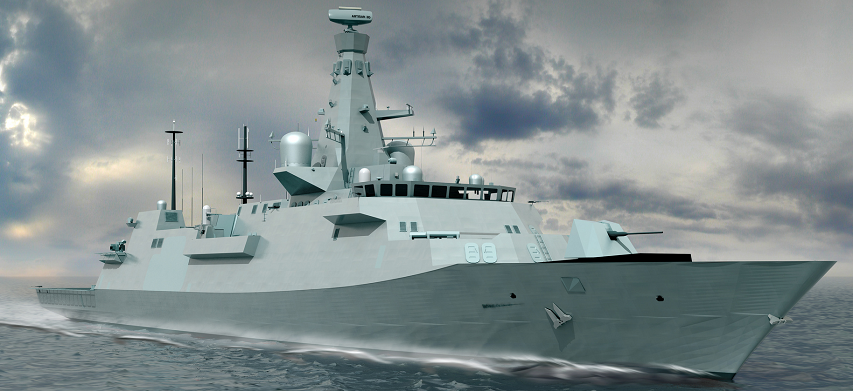
An artist’s rendition of BAE’s Type 26 Global Combat Ship, which was selected as the Canadian Surface Combatant design in 2019, the most recent “largest single expenditure in Canadian government history” (as all major weapon systems purchases tend to be).
(BAE Systems, via Flickr)
On purely economic grounds, it would often make sense to add Canada’s order on to existing US, British, or other allied military orders to benefit from the economies of scale … but pure economic benefits don’t rank highly on the overall scale of importance. There’s also the understandable desire of the government to buy fewer items with wider capabilities as the government’s requirements for the military change with time and circumstance.
Were Canadian defence planners too cavalier in their requirements and design modifications? Maybe. Looking at it from their perspective, though, we should appreciate that they thinking about capabilities for a ship that Canada will use until the 2100s.
Doubts about the CSC are going to keep multiplying. The per unit costs can only increase so much before people start seriously discussing reducing how many of them will be built. You can be sure that some within government are already asking “Why 15? Why not 12?” Serious concerns are also being raised about whether the defence budget can afford to maintain CSC and keep them technologically up to date after the fleet is introduced. Given the CAF’s personnel recruitment troubles, moreover, it’s unclear if the RCN will have enough sailors to operate the full fleet. The first CSC that hits the water, furthermore, will have all sorts of kinks and problems that will need to be sorted out. That’s standard for first ships off the line, but you can be sure that every failing will be met with handwringing and charges of incompetence.
To address these concerns, the government must let DND/CAF better explain what the CSC is designed to do and why it needs to do it. Simply telling Canadians that it’s the right ship isn’t enough when it’s easy to point to lower-cost alternatives. As well, the government needs to be far more transparent about estimates of costs and what’s driving them. Political and public support for the CSC shouldn’t be taken for granted, and growing concerns about the program can’t be simply brushed away.
June 4, 2023
D-Day Series: RCN and Operation Neptune
Valour Canada
Published 28 Dec 2015This video describes the Royal Canadian Navy’s (RCN) invaluable contributions to the invasion on D-Day, June 6, 1944. Operation Neptune was the name of the English Channel-crossing portion of the larger Normandy invasion (named Operation Overlord).
1. Overview (0:00)
Dawn. June 6, 1944. D-Day. Operation Overlord, the largest amphibious invasion in history, is about to begin. This is a description of the battlefield prior to the attack and also tells how the RCN played an important role both in the English Channel and along the French coast.2. Stop the U-boats (2:55)
Churchill said that the only thing that scared him during the war were the U-boats. This describes the problematic German U-boats and how the British and Canadian Navies (Operation Neptune) worked together to find, track, and destroy the underwater menace prior to D-Day.3. Clear the Mines (6:27)
“There is no doubt that the mine is our greatest obstacle to success” – British Admiral Bertram Ramsay. The size and effectiveness of the German minefield that guarded the D-Day beaches and how the Allied Navies worked together to prepare a route through which the invasion could occur.4. Cover the Beaches (9:49)
The Canadian Tribal-class destroyers played a significant role in eliminating the German Navy’s major surface warships’ threat to the invasion fleet. The RCN destroyer squadron and their mission of clearing the English Channel of German ships before, during, and after the invasion. A battle between the Canadian destroyers Haida and Huron and four German ships near the port of Brest on June 9 is discussed. Also covered are the two Canadian destroyers, Algonquin and Sioux, that were tasked with shore bombardment at Juno Beach.5. Land the Troops (13:01)
Shortly after dawn and following a forty-minute naval barrage at Juno Beach, the first Canadian soldiers came ashore. By noon, the beach was held by the Canadians and millions of tons of supplies were being brought ashore. This section describes the first waves of the invasion and the tanks, artillery, vehicles, and supplies that were soon to follow.
(more…)
May 26, 2023
CH-124 Sea King; Legendary ASW helicopter and example of a deeply flawed defense procurement process
Polyus
Published 21 May 2023The Sea King was a legendary aircraft in the history of the Royal Canadian Navy. It filled the role of hunter and killer in the Cold War against Soviet submarines. By the mid-90s the situation had changed and their retirement seemed eminent. How naive. The process of finding a replacement for this workhorse would be an election promise by government after government for over 30 years. Its replacement, the CH-148 Cyclone, became operational in 2018. This allowed the 55 year old workhorses to finally retire.
(more…)
February 19, 2023
Flower-Class Corvettes – WW2 Atlantic Defender
Matsimus
Published 29 Jun 2020The Flower-class corvette (also referred to as the Gladiolus class after the lead ship) was a British class of 294 corvettes used during World War II, specifically with the Allied navies as anti-submarine convoy escorts during the Battle of the Atlantic. Royal Navy ships of this class were named after flowers, hence the name of the class.
The majority served during World War II with the Royal Navy (RN) and Royal Canadian Navy (RCN). Several ships built largely in Canada were transferred from the RN to the United States Navy (USN) under the lend-lease programme, seeing service in both navies. Some corvettes transferred to the USN were manned by the US Coast Guard. The vessels serving with the US Navy were known as Temptress and Action-class patrol gunboats. Other Flower-class corvettes served with the Free French Naval Forces, the Royal Netherlands Navy, the Royal Norwegian Navy, the Royal Indian Navy, the Royal Hellenic Navy, the Royal New Zealand Navy, the Royal Yugoslav Navy, and, immediately post-war, the South African Navy.
After World War II many surplus Flower-class vessels saw worldwide use in other navies, as well as civilian use. HMCS Sackville is the only member of the class to be preserved as a museum ship. Flower Class corvettes were originally intended for coastal escort and mine clearing work. Derived from a whaler design, they were simple, highly seaworthy vessels that could be constructed in secondary yards. The dire lack of ocean escorts early in the war necessitated their being used to screen convoys traversing the North Atlantic between Nova Scotia and the UK. This was a role for which they were ill-designed, and their crews suffered accordingly. The Flowers were wet, highly cramped and impossibly lively. Many sailors could not adjust to the exhausting routine. Compounding the misery was the inexperience of the crews, most of whom had never been to sea. But any escort was better than none at all, so the yards continued to turn out corvettes. 120 were built in Canadian yards, and slightly more in the UK.
(more…)
January 2, 2023
An in-depth look at the Type 26 frigate design
Navy Lookout
Published 31 Dec 2022The Type 26 frigates being built for the Royal Navy [and Royal Canadian and Royal Australian navies] are specialist submarine hunters but with a range of other capabilities. This video provides a primer on the overall warship design, its weapons, sensors and decoys.
(more…)
December 17, 2022
Canada’s consciously anemic foreign and military policies
In The Line, Matt Gurney explains why Canada consistently fails to “punch above their weight” in foreign and military matters and that it’s not at all accidental:
Canadian politicians have an inputs problem. Maybe that’s actually the wrong way to describe it — the problem is with the outputs. But it’s the inputs they love talking about.
If that all sounds a little vague, maybe this sounds familiar: “Hey there, citizen. Alarmed about Troubling Issue X? Well, don’t worry. We’re pledging $300 million over the next six years to Troubling Issue X. Oh, and Annoying Irritant Y? We’re announcing a task force to report back on that.”
Does Troubling Issue X get solved? Does Annoying Irritant Y get less annoying and irritating? Eh. We probably don’t collect enough stats to even know. The purpose of the announcement isn’t to solve the problem. It’s to announce something and hope people stop paying attention.
Canadian politicians — especially the current federal government — are notorious for announcing the same “new thing” in as many ways and in as many different contexts as they can. They get several hundred dollars of positive press coverage for every actual dollar spent on whatever the announced spending is supposed to be devoted toward. If they can recycle announcements from months past into a new set of announcements, you’re pretty much guaranteed they’ll do it. Announcing spending is, one must assume, what gets people to cast their votes for the party announcing the spending.
A lot of what looks like policy failure in Canadian foreign and military affairs only looks like a failure when you forget that accomplishing something wasn’t the point. Being photographed and videotaped saying you’ll accomplish something was the point. And the announcement itself accomplishes that!
This was true even before the Trudeau government started handing out bushel baskets of money to various Canadian newspapers, TV networks, magazines, and other legacy media entities. What was once merely praise is now bought sychophancy from the (literally) paid media.
On the military side of things, the Canadian Armed Forces are an organization the government grudgingly funds, but only enough to look good for the self-same media:
It’s not that Canada accomplishes nothing on the world stage. We accomplish things. Sometimes we even play an outsized role — Canada did, for instance, perform well and above expectations in Kandahar. The odd exception aside, though, when it comes to foreign policy generally and especially with defence policy, successive Canadian governments have set a very clear target: we will do, technically, more than nothing. We won’t often do much more than that. But we’ll do enough to not get kicked out of the club of allied nations.
Why do we want to be in the club? Not because we feel any sense of duty or obligation to lead and take on any real burden. But because being in the club makes us safer, and it would, after all, be embarrassing to get kicked out.
It’s important to remember that Canada is, by any standard, a rich country. We could be an actual force for good and stability on the world stage if we wanted to. We could build a bigger fleet and patrol more places, more often — we’d be welcome! We could have a bigger army and lead more peacekeeping missions, or contribute more to NATO. A bigger air force, likewise, could contribute more to our allies, especially in Europe in these unsettled times. In a parallel universe where we did these things, we’d then be able to say with a straight face that the purpose of Canada’s navy was contributing to the safety and security of the seas, the purpose of our army was to assist allies and provide peacekeepers to help end international crises, and the purpose of our air force was to project power and bring support to threatened allies.
In the world we actually live in, though, the purpose of the navy is to technically have a navy that technically does things, the purpose of the army is to technically have an army that technically does things, and the purpose of the air force … you see where this is going, right?
Our navy does things! It shows up places, and patrols areas. But only as much as necessary to technically tick that box. The army is in much the same condition; with a growing number of domestic commitments sapping its strength and budget, even its ability to assist with disasters at home is largely maxed out, but we send a few hundred soldiers here and there, thereby allowing ourselves to proclaim that we’ve … sent soldiers somewhere. The air force, as was just reported this week, can’t even really do even that much this year. The exhausted force is skipping the very modest — a half-dozen fighter jets — annual mission to Europe. The air force is just too burnt out to sustain even that tiny mission.
This is a big and growing problem. Canada, again, is rich enough to make a difference in global security affairs, if we chose to make different choices with how we spend our money. We have made the opposite choice. We field just enough of a military to be able to make just enough difference to avoid being accused of being total deadbeats, and no more.
Can it fight? Eh, maybe a bit. Can it make a difference? Depends how you define “difference”, I guess. Does it make the world and our allies safer? In a way? Can it keep Canadians safe at home? Sort of.
This isn’t a failure of our policy. This is our policy. We show up with as little as possible for as brief a time as possible, but gosh, do we ever talk about the showing up.
December 9, 2022
Canada’s “historic” shift toward the Indo-Pacific is … more marketing than strategy
In The Line, retired Canadian Lieutenant General Mike Day distills down all the airy phrases to see just what the Canadian government is actually going to do in the Indo-Pacific as opposed to merely talking about it:
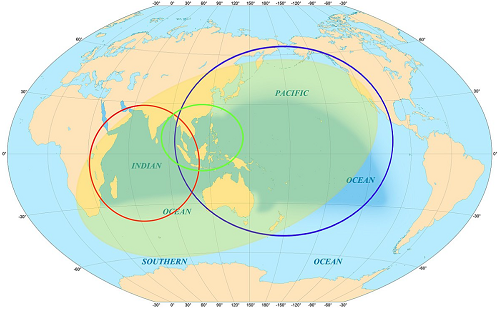
“Red circle/oval roughly depicts the Indian Ocean region. Blue circle/oval covers the Pacific region. Green oval covers ASEAN. Yellow overlay covers the Indo Pacific.”
Map annotation by Eric Gaba via Wikimedia Commons.
A formal public-policy statement from the Government of Canada is a rare thing. It is even rarer when it is not just a speech but a published written document. The rarest of these is undoubtedly when such a document focuses on foreign policy. When Foreign Affairs Minister Mélanie Joly recently pitched her “once-in-a-generation shift” toward the Indo-Pacific, much was made of why Canada was doing it and what it would achieve. No fewer than four cabinet ministers took part in the announcement. Canada will, they announced, step up naval patrols of the region, continue to expand trade with China while also tightening our protections of intellectual property and ownership rules for strategic industries, and use “Team Canada” trade missions to boost commercial links with other growing regional economic powers, including India. We seek also to expand our intelligence and cybersecurity links with allies and partners in the region.
Now that the dust on the rhetoric has settled, closer examination reveals that this might simply be an exercise of branding separate activities into a marketing-friendly bundle, as opposed to a coherent plan focused on achieving specific outcomes.
In examining the document two approaches are equally useful in assessing value: whether the content has some substance and whether the policy framework is sufficiently robust to hang various activities and plans on its body.
Three hints are provided as to why the new plan might not be the cornerstone of Canada’s foreign policy that it portends to be. Firstly, operating in the “National Interest”, a phrase used six separate times over the 26 pages, is given neither form nor function and lacks any definition. It is reminiscent of the Cheshire Cat talking to Alice asking her “where do you want to get to”. When Alice replies that “I don’t much care …” the Cheshire Cat wisely suggests that “Then it doesn’t matter which way you go.” With no definition of national interests pretty much anything can be hand waved as to being necessary and required, or not, for its achievement.
This leads in turn to the second hint that the plan might be more posturing than substance. Lacking the single aimpoint of operating in the national interest, the “objectives” supposedly fill that gap by providing a set of specific achievements which in combination would be a sufficiently clear aimpoint. But normally objectives can, and should, be thought of as something specific and measurable, allowing plans to be developed to achieve them. “Save 100 dollars this month” or perhaps, in more relevant terms, “Increase our trade in the Indo-Pacific region by 100 per cent over the five years of this policy enactment.” Plans can then be developed to achieve those objectives. But reviewing those objectives reveals that they are themselves actions, not end-states. It appears that the policy is based on “doing, not achieving”. I am reminded of my sons many years ago. When asked if their rooms were clean, they would reply, “I’m cleaning it.” The process was enduring but we most certainly disagreed on the value of the activity as opposed to achieving a measurable result. Under this construct the government can claim that as long as Canada is doing stuff the policy should be considered a success.
October 10, 2022
Chinese Warlords and the Royal Canadian Navy – WW2 – OOTF 028
World War Two
Published 9 Oct 2022In today’s episode of Out of the Foxholes, we discuss the role of Chinese warlords played in the war against Japan, while also shining a bit more light on the Canadian Navy and its impact on WW2.
(more…)
August 6, 2022
Canada’s New Warship
Frontline Pros
Published 12 Feb 2022The Type 26 Frigate will become the first dedicated warship Canada has built in decades. Soon the Royal Canadian Navy will take ownership of 15 of these vessels, making them the largest owner of the Type 26 in the world.
(more…)
July 30, 2022
Beartrap: The Best Way To Land A Big Helicopter On A Small Ship At Sea
Polyus Studios
Published 29 Jul 2022Don’t forget to like the video and subscribe to my channel!
Support me on Patreon – https://www.patreon.com/polyusstudiosToday, navies across the world use an ingenious system to land helicopters on the rolling deck of a ship at sea. It enabled the powerful helicopter-destroyer combination that has become the dominant form of at sea anti-submarine warfare. It’s the “helicopter haul down and rapid securing device”, more commonly known as Beartrap. This device may be little known to the public, but it stands as one of the greatest contributions Canada has ever made to naval aviation, and ushered in the age of helicopters at sea.
(more…)
July 15, 2022
HMCS Sackville Walkaround
iChaseGaming
Published 25 Jul 2019Moved to Halifax, must visit HMCS Sackville
and here she is!
(more…)
June 29, 2022
A very charitable view of Canada’s Indo-Pacific naval involvement
In a post on the IISS Military Balance Blog, James Hackett extends far more charity toward the Canadian government’s “incremental growth” of naval activities in the Pacific and Indian Oceans than it may deserve. Given the already stretched nature of the Royal Canadian Navy under ordinary conditions, a cynic might be tempted to speculate what other activities and training will have to be foregone to allow the noted two-ship deployment for several months overseas:
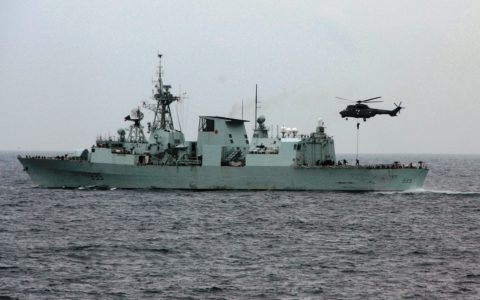
A Chilean navy boarding team fast-ropes onto the flight deck of RCN Halifax-class frigate HMCS Calgary (FFH 335) during multinational training exercise Fuerzas Aliadas PANAMAX 2009.
US Navy photo via Wikimedia.
On 14 June, Royal Canadian Navy (RCN) frigates HMCS Winnipeg and HMCS Vancouver left their berths at Esquimalt naval base in British Columbia, bound for the US-led Rim of the Pacific (RIMPAC) 2022 exercise, due to take place from 29 June to 4 August. The ships will then set a westerly course for a five-month deployment in the Indo-Pacific, principally to support Canada’s Operation Projection. This is the first twin deployment of its kind since 2017 and heralds a bolstering of Canada’s defence contribution in the region, with new naval investments on the way to help sustain it, but will they be enough?
[…]
However, a number of the building blocks to help sustain Canada’s regional defence ambitions are still being put in place. In 2016 the RCN retired the last of its Protecteur-class oiler and replenishment vessels and, for a time, resorted to hiring Chilean and Spanish ships to maintain replenishment capability amid delays in the project to replace the class. In 2018, as an interim measure it introduced the converted German container vessel MV Asterix into the role of an at-sea replenishment vessel and oiler.
The first of two new Joint Support Ships (JSSs) will be delivered in 2023. Also called the Protecteur-class, these ships are being built in Vancouver. They form a key part of Canada’s ambitious National Shipbuilding Strategy, alongside new class of surface combatants and Arctic patrol vessels. Based on the German Brandenburg-class design, the JSSs are intended to be compatible with Canada’s afloat combat platforms, boasting combat systems, tactical data links and defensive weapons systems. What role Canada’s submarine flotilla might play in an enhanced Indo-Pacific posture is uncertain, although one submarine, HMCS Chicoutimi, undertook an unusual deployment into the region in 2017/18.
Whether two JSSs will be enough in terms of naval logistic support at sea also remains an open question and there has even been talk of extending the lease on MV Asterix. The RCN will, nonetheless, have regenerated its sovereign at-sea replenishment capability once the new ships are in service. Alongside the other planned capability enhancements, the future RCN should be a more capable force than it is today. With the two new Protecteur-class vessels in service, the RCN should be more operationally sustainable and also better able to offer some of the broader non-combat defence assistance that may be required on the engagement and training tasks seen in missions like Operation Projection.
It’s always a foolish bet that any major equipment for the Canadian military will be delivered on time or under budget, and the Joint Support Ship project is unlikely to change that. The ships were originally announced in 2004, but between changes of government and re-imagining the entire RCN shipbuilding program, the contracts were not signed until 2020. Initially, $2.6 billion was allocated to purchase two vessels with an option for a third. It didn’t take long for budget realities to cancel the optional ship, and by 2020, it was reported that the anticipated final cost will be $4.1 billion. Unlike pretty much every other shipbuilding project, the Project Resolve ship MV Asterix was accepted into service in 2018, both on time and within budget … perhaps because this was a conversion of an existing hull rather than an all-new build.
The next major step after the JSS project is completed is to roll out the replacements for the Halifax-class frigates and the already-retired Iroquois-class destroyers. It will theoretically consist of 15 hulls, but as we usually see in naval expenditure, if the RCN ends up getting a dozen they may consider themselves lucky. The ships will be based on the British Type 26 frigate design.
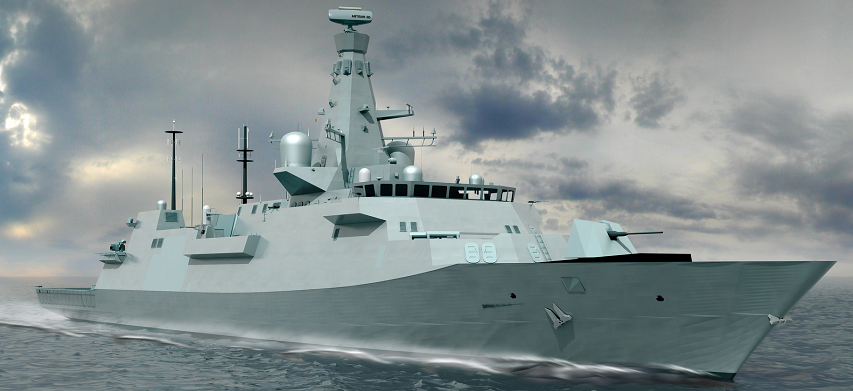
An artist’s rendition of BAE’s Type 26 Global Combat Ship, which was selected as the Canadian Surface Combatant design in 2019, the most recent “largest single expenditure in Canadian government history” (as all major weapon systems purchases tend to be).
(BAE Systems, via Flickr)
Construction of the Canadian Type 26 ships is “expected” to begin in 2024. Gamblers may want to place their bets on how close to that date actual fabrication begins and by just how much the budget will be overshot by the time a few of the ships enter service in the “early 2030s”.

